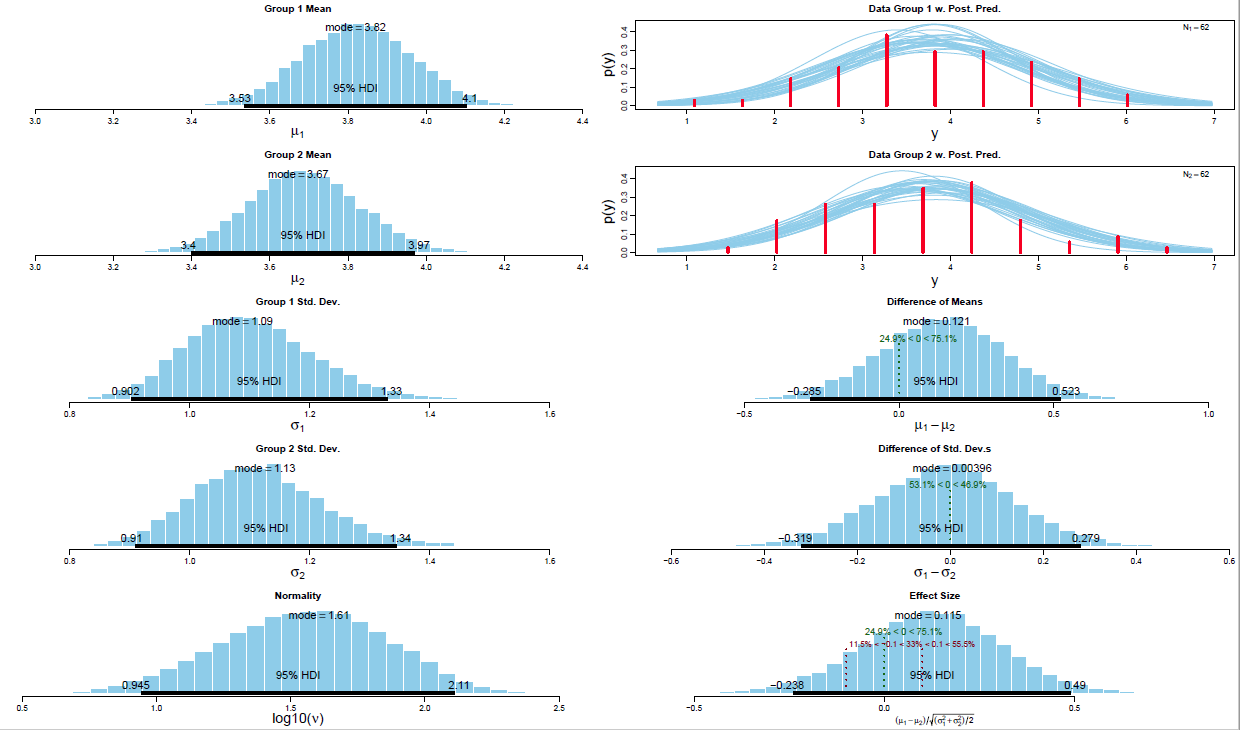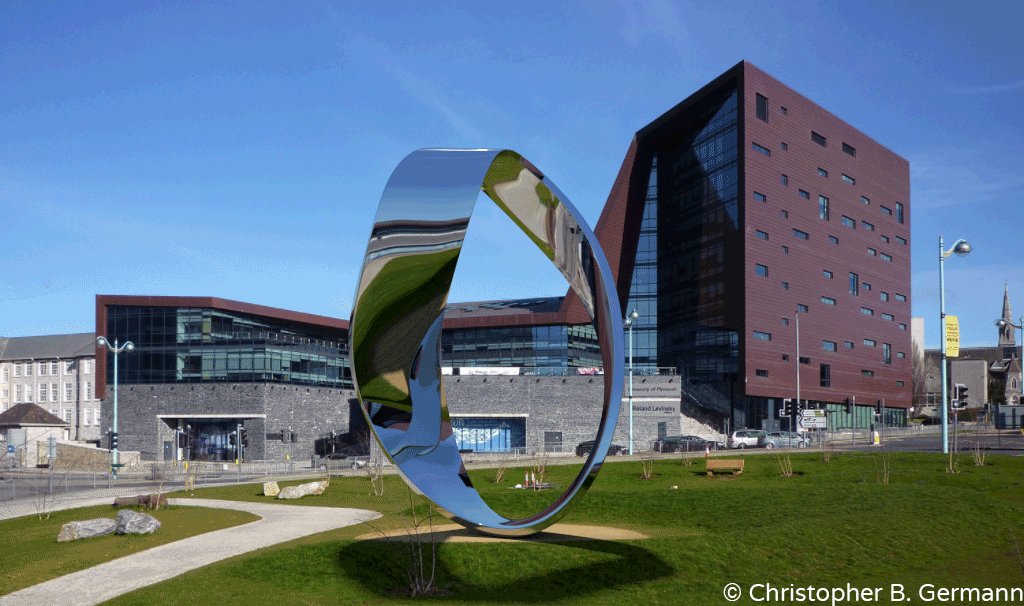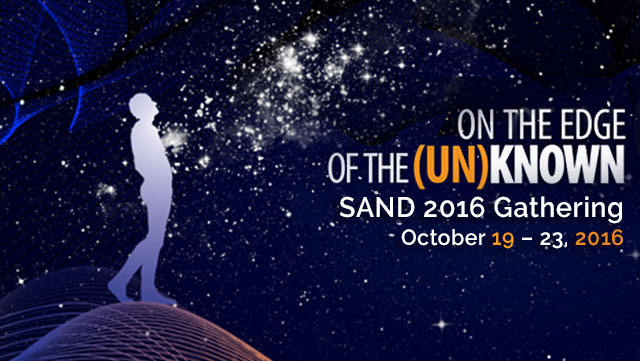

Presentation on "Quantum cognition and non-classical probability in visual perception"
Statistical research methods workshop on "The pitfalls of null hypothesis significance testing in science"
URL: https://www.youtube.com/watch?v=wOYgQzCLiBQ

 |
 |
Associated website of the European Commission: |
Project homepage: http://www.irrational-decisions.com
Oral presentation - School of Psychology conference – University of Plymouth – June 2018
Abstract
Quantum cognition is an innovative and interdisciplinary emerging field within the cognitive sciences as, inter alia,
evidenced by a recent theme issue published by the Royal Society. It is
independent from the widely debated Orch-OR (Orchestrated Objective
Reduction) theory formulated by Sir Roger Penrose and Stuart Hameroff
which postulates that quantum processes at the microtubular neuronal
level are causative for the emergence of consciousness (cf. Hameroff
& Penrose, 2014). Quantum cognition, on the other hand, applies the
abstract formalism of quantum mechanics to cognitive processes, e.g.,
decision-making, perception, memory, conceptual reasoning, language,
etc. (e.g., Aerts, Broekaert, & Gabora, 2011; Atmanspacher, 2016;
Atmanspacher & Filk, 2013; Pothos & Busemeyer, 2013; Wang,
Busemeyer, Atmanspacher, & Pothos, 2013; Yearsley & Pothos,
2014). The vast majority of contemporary models (e.g., those utilising
Boolean logic or Bayes' theorem) are grounded on Kolmogorovian
probability axioms which stipulate that operators obey commutativity,
i.e., P(A∩B)=P(B∩A). By contrast, quantum probability theory is not
limited by these aprioristic structural constraints and is able to
parsimoniously account for numerous empirical results which appear, prima facie,
irrational and paradoxical in the orthodox framework. Recent empirical
evidence from experimental quantum physics (e.g., Giustina et al., 2015;
Handsteiner et al., 2017; Hensen et al., 2015) is highly pertinent for
psychology, neuroscience, and computer science, because it challenges
some of the unquestioned assumptions which underlie most of current
theorising, viz., naïve and local realism (see Wiseman, 2015). This
presentation will briefly review these paradigm-shifting findings and
their epistemological and ontological implications. Moreover, I will
discuss conceptually related psychophysics experiments conducted in
India and the UK during my PhD. Finally, neurochemical processes
(specifically 5-HT2A receptor agonism) which underpin
open-mindedness and intellectual curiosity will be addressed, as these
personality traits are indispensable to appreciate the extensive
ramifications of the novel and epistemically challenging results.
Poster presentation: Cognition Institute conference – University of Plymouth – June 2018
Abstract
5-Methoxy-N,N-dimethyltryptamine (acronymized as 5-MeO-DMT) is sui generis
among the numerous naturally-occurring psychoactive indolealkylamine
substances. Research indicates that 5-MeO-DMT may be endogenously
synthesized in human pineal and retina. Moreover, it has been detected
in blood, urine, and cerebrospinal fluid (Shen, Jiang, Winter, & Yu,
2010). Anthropological evidence suggests that various cultures utilised
it for medicinal, psychological, and spiritual purposes for millennia
(Furst, 1972). The molecule acts as a nonselective partial agonist at
the 5-HT1A/2A receptor subtypes (associated with emotions, cognition, and memory, inter alia).
Phenomenologically, 5-MeO-DMT can occasion “nondual experiences” (cf.
Josipovic, 2014) analogous to those described in several ancient Asian
knowledge traditions (e.g., Advaita Vedānta (Silberstein, 2017)) and it
has been characterised as a prototypical entheogen (Metzner, 2015; Ruck,
Bigwood, Staples, Ott, & Wasson, 1979). Accumulating evidence
indicates that it is a ligand of the “Trace amine-associated receptors”
(TAARs), a class of G protein-coupled receptors that were discovered in
2001. TAARs have been associated with pathological neuroadaptations
caused by prolonged exposure to addictive drugs (e.g., alcohol, heroin,
cocaine, etc.). Ergo, this molecular target might partially explain
5-MeO-DMTs promising neurorestorative and neuroprotective effects in
addiction treatment. Furthermore, a recent cutting-edge neuroscientific in vivo and in silico study using human cerebral organoids found that 5-MeO-DMT matches the σ1 receptor which regulates cytoskeletal dendritic spine morphology and neurite outgrowth (Dakic et al., 2017). Therefore, σ1R
agonism may mediate neuroplastic processes which accompany positive
cognitive/behavioural changes. In addition, 5-MeO-DMT has been shown to
downregulate the metabotropic glutamate receptor 5 (mGluR5) which is
involved in the hedonic rewarding effects of addictive drugs (Knapp
& Kornetsky, 2009). The effects of the extraordinary tryptamine on
the dopaminergic system (e.g., nucleus accumbens, ventral tegmental
area) are currently not well defined and more research is evidently
needed to elucidate its exact neuropsychopharmacological mechanisms of
action and potential associated epigenetic effects.
I started studying psychology at the Free
University of Amsterdam. My bachelor studies (supervised by Dr. Karen
Mortier) were conducted within the theoretical framework of embodied
cognition. In our experiments, we utilized different mood induction
techniques in order to empirically investigate their influence on
selective attention in a series of computerized visual search tasks. Our
theorizing was significantly influenced by considerations regarding
conceptual metaphor theory and the neuropsychological valence model of
hemispheric processing of emotion perception.
Subsequent to my
bachelor studies, I successfully completed a Master of Science in
Psychological Research Methods (with distinction) at the University of
Plymouth. During my master's project I collaborated with Prof. Simon
Handley and the resulting dissertation focused primarily on the role
prefrontal cortical executive functions play in logical syllogistic vs.
belief-based reasoning (i.e., syntax vs. semantics in belief bias). Much
of the motivation for our experimentation was derived from prior work
on self-control/willpower, ego depletion, and contemporary dual process
theories of cognition. Based on this background, I acquired substantial
knowledge in cognitive psychology, particularly in the domain of logical
reasoning and decision-making (e.g., behavioural economics in the
Kahneman and Tversky research tradition).
Given the well-documented paralogisms associated with classical Fisherian null hypothesis significance testing based on p-values (cf. Cohen, 1994) I advocate alternative inferential research methods. For the statistical analyses of the experimental data I collected during my PhD I utilised non-parametric Bayesian bootstrapping, Bayes Factor analysis for model comparison, and Bayesian a posteriori parameter estimation via Markov chain Monte Carlo simulations (in addition to orthodox frequentist null hypothesis significance testing).
Professor Gerd Gigerenzer (Director Emeritus of the Center
for Adaptive Behavior and Cognition at the Max Planck Institute for
Human Development in Berlin) formulated the following on the ubiquitous
quasi-ritualistic usage of p-values:
“Few researchers
are aware that their own heroes rejected what they practice routinely.
Awareness of the origins of the ritual and of its rejection could cause a
virulent cognitive dissonance, in addition to dissonance with editors,
reviewers, and dear colleagues. Suppression of conflicts and
contradicting information is in the very nature of this social ritual.” (Gigerenzer, 2004, p. 592)
Based on my practical experience it is my opinion that Bayesian MCMC methods (an acronym for Markov chain Monte Carlo; cf. Hastings, 1970) are currently the most powerful analytical framework and the richness of information provided by this approach supersedes Bayes Factor analysis (even though Bayes Factor analysis is definitely superior to the logically incoherent p-value based analyses which unfortunately dominate psychology). The underlying large data simulations are quite resource intense in computational terms and they became only recently available to mainstream science (due to the exponential increase in computational performance; cf. Moore's law). Figure 1 visualises the output of a Bayesian MCMC analysis as reported in my PhD thesis (a between group comparison on the data of a quantum psychophysics experiment on noncommutativity in visual perception using the 95%HDI/ROPE decision algorithm for hypothesis testing; cf. Kruschke & Liddell, 2018).

I am a proponent of the open-source philosophy. For data analyses I preferably utilise the R environment for statistical computing and graphics. In the past I designed various experiments using the freely available Python-based application PsychoPy.
Moreover,
I am a web-designer and a user-interface developer and proficient with
various modern information technologies and scripting languages (e.g.,
HTML5, CSS3, JavaScript, PHP, etc.). Shortly after finishing my masters
in psychological research methods I started a web design company in
Germany.
I am intrinsically very interested in the
5-hydroxytryptamine (5-HT, serotonin) system and its role in perception
and cognition (for instance, creativity, open-mindedness, cognitive
flexibility, neuroplasticity and neurogenesis). Furthermore, philosophy
of science and mind capture my deepest curiosity.
Personally, I love to exchange ideas with scholars who adhere to different scientific and cultural paradigms (i.e., Weltanschauungen)
because interdisciplinary and cross-cultural discourse offers great
intellectual stimulation and provides impetus for the development of
novel unconventional ideas, hypotheses, and theories.
I am personally very engaged in the socio-political aspects of psychology and neuroscience (i.e., social psychology and neuropolitics) and I regard social/public engagement as an important aspect of academic/intellectual life. I am convinced that the following three domains are currently of utmost importance and that “irrational decisions” and other deeply rooted (unconscious) aspects of human psychology lie at the very heart of these crucial problems which concern all of us.
"Be less curious about people and more curious about ideas". ~Marie Curie

I argue that the Möbius band provides an easily accessible visual metaphor for dual-aspect Monism à la Pauli-Jung. The Pauli-Jung conjecture is particularly relevant in the context of modern neuroscience as most contemporary neuroscientists stipulate prima facie that the brain produces consciousness. However, this perspective is a working hypothesis which is not conclusively supported by empirical evidence. The monistic dual-aspect perspective provides a parsimonious & elegant solution for the mind-body problem and the hard problem of consciousness (viz., the production problem). The ancient symbolism of the Möbius band is particularly interesting from an embodied and grounded cognition perspective. Specifically, Lakoff’s “conceptual metaphor theory” provides a theoretical framework which highlights the importance of metaphorical thinking, i.e., metaphors lie at the very core of human cognition and structure all of human thought at the most fundamental neuronal/cognitive level (e.g., via neuronal Hebbian mechanisms of long-term potentiation which are established in the Piagetian sensorimotor-phase of human development). Besides its theoretical scientific relevance pertaining to fundamental questions concerning epistemology and ontology, the non-dual (Sanskrit: अद्वैत, “Advaita”) perspective has important and far-reaching moral and ethical ramifications.
presented on 9th of September 2015 @ Off the Lip conference (Transdisciplinary Approaches to Cognitive Innovation)
Contemporary materialistic reductionist neuroscience emanates from the working hypothesis that the underpinnings of human perception and cognition are based on electrochemical signal transduction. That is, electrical action potentials and chemical neurotransmission are postulated to undergird all mental processes. Interestingly, especially from a neurochemistry/biology point of view, several secondary (possibly semiotic) plant compounds have close structural relationships with various human neurotransmitters and consequently can reliably change a variety of cognitive processes (both quantitatively and qualitatively). N,N-Dimethyltryptamine (often acronymised as DMT) is a paradigmatic exemplar. Its molecular structural geometry (see Appendix) is very closely related to 5-hydroxytryptamin (Serotonin). DMT is a phylogenetically ancient molecule which is ubiquitous in the plant and animal kingdom (Smith, 1977). In its pure synthesized form, it is a white, pungent-smelling, crystalline solid. Accumulating converging evidence suggests that DMT is an endogenous neurotransmitter in the human brain (e.g., Cozzi, et al., 2009; Fontanilla, et al., 2009).
A defining criterion of DMTs psychological activity is that it affects visual perception in the most spectacular ways possibly imaginable. Its profound experiential/phenomenological effects are described as consciousness expanding, transformative, and essentially ineffable. DMT has been used in shamanistic rituals for millennia by several cultural traditions. For example, it constitutes the active chemical principle in Ayahuasca, a plant based, drinkable concoction, which is utilized by indigenous tribes in the Amazonian rainforest for divinatory and healing purposes (Metzner, 2014). Typically, the main ingredients of the Ayahuasca brew are two plants, Psychotria Viridis (which contains the DMT) and Banisteriopsis Caapi (which contains the harmala alkaloid harmine, a slective and reversible monoamine oxidase inhibitor that prevents the breakdown of DMT in the gastro-intestinal tract). Western science has just recently learned about DMT and its psychoactive effects from ethnobotanists who were able to conserve this ancient knowledge literally in the last minute because old shamanic traditions are being extinguished at a fast pace by the modern industrial world.
 “Templo Sacrosanto” by Pablo Amaringo (see also Luna & Amaringo, 1999).
“Templo Sacrosanto” by Pablo Amaringo (see also Luna & Amaringo, 1999).

Compounds such as psilocin (which is a precursor of psilocybin) and DMT have chemical structures that resemble the neurotransmitter serotonin. This structural similarity allows them to stimulate serotonin-sensitive neurons. Note that the intermolecular serotonin motif is embedded in both analogous structures.
Christopher Germann and Prof. Roger Malina discuss Chris’ current work in the Cognovo PhD program, on quantum cognition which applies the mathematical formalisms of quantum theory to understanding cognitive processes. Chris is currently working on non-commutativity in decision theory, with laboratory experiments in visual decision making. He is also studying the role of the endogenous neurotransmitter DMT (N,N-Dimethyltryptamine) in perception and cognition.
URL: https://www.mixcloud.com/radiocognovia/2015-01-30-radio-cognovia-christopher-b-germann-interview/: Radio Cognovia interview with Christopher B. Germann


Chris
presented the empirical results of his psychophysics experiments at the
”Science and Nonduality“ conference which took place in California's
Silicon Valley.
Science and Nonduality (acronymised as SAND)
provides a forum where preeminent physicist, neuroscientists,
psychologists, philosophers, artists and a large, international
community gather to explore and advance the new emerging paradigm that
is both grounded in cutting-edge science and consistent with the ancient
philosophical wisdom of nondual schools of thought (e.g., Advaita
Vedānta, Mahāyāna Buddhism) — the deep understanding of the
interconnectedness of all life.
"Imagine a multidimensional spider's web in the early
morning covered with dew drops. And every dew drop contains the
reflection of all the other dew drops. And, in each reflected dew drop,
the reflections of all the other dew drops in that reflection. And so ad
infinitum. That is the Buddhist conception of the universe in an
image."
~ Alan Watts
"It really boils down to this: that all life is
interrelated. We are all caught in an inescapable network of mutuality,
tied into a single garment of destiny. Whatever affects one destiny,
affects all indirectly."
~ Martin Luther King Jr.

Indra's net is a visual metaphor that illustrates the ontological concepts of dependent origination and interpenetration (see Cook, 1977).
SAND
explores the edge where knowledge meets the unknown. SAND is inspired
to develop a vibrant community of individuals who share this vision,
believing the time is right for the fragmentation of knowledge that has
occurred over the last centuries to give way to a new integrative
paradigm in which science and spirituality reenter into meaningful
dialogue – bridging an empirically responsible and non-dogmatic
spirituality with a humanistic science willing to consider questions of
context, perception, meaning and purpose.
„Was ich in der Natur sehe, ist eine großartige Struktur, die wir nur sehr unvollkommen zu erfassen vermögen und die einen denkenden Menschen mit einem Gefühl der Demut erfüllen muss. Dies ist ein echt religiöses Gefühl das mit Mystizismus nichts zu schaffen hat.“
Translation: “What I see in Nature is a magnificent structure that we can comprehend only very imperfectly, and that must fill a thinking person with a feeling of humility. This is a genuinely religious feeling that has nothing to do with mysticism”.
~ Albert Einstein (1979, p.132)

During
my PhD I absolved a secondment at Manipal University Jaipur in India
where I conducted empirical research on psychophysical noncommutativity
effects in cross-modal perceptual processes (in collaboration with
Professor Geetika Tankha). In addition, the experimental investigation
focused on the concept of ego-extension from a cross-culural
perspective.

Professor Geetika Tankha is Head of the Psychology department at Manipal University Jaipur, India. She holds a doctorate in psychology from the University of Rajasthan. Her major areas of research interest are individual differences, human cognition, environmental and cross-cultural psychology.
More infos:
http://jaipur.manipal.edu/foa/about-foa/leadership/geetika-tankha.html

Christopher B. Germann
Marie Curie Fellow
Cognition Institute
Plymouth University
Address: CogNovo → Link Building (3rd Floor) | Plymouth University | Drake Circus | Plymouth | PL4 8AA | United Kingdom
Email: christopher.germann@plymouth.ac.uk
